Worm Count Results Demystified

WHAT DO THESE WORM COUNT RESULTS MEAN?
The results of the tests you obtain will indicate whether a worming treatment is necessary.
Certain tests will reveal the extent of parasitic presence in the animal, and it is generally acknowledged that a low level of parasites can be acceptable or even advantageous for immune system stimulation.
However, other parasites pose greater risks, and any signs of infection will necessitate a deworming intervention.
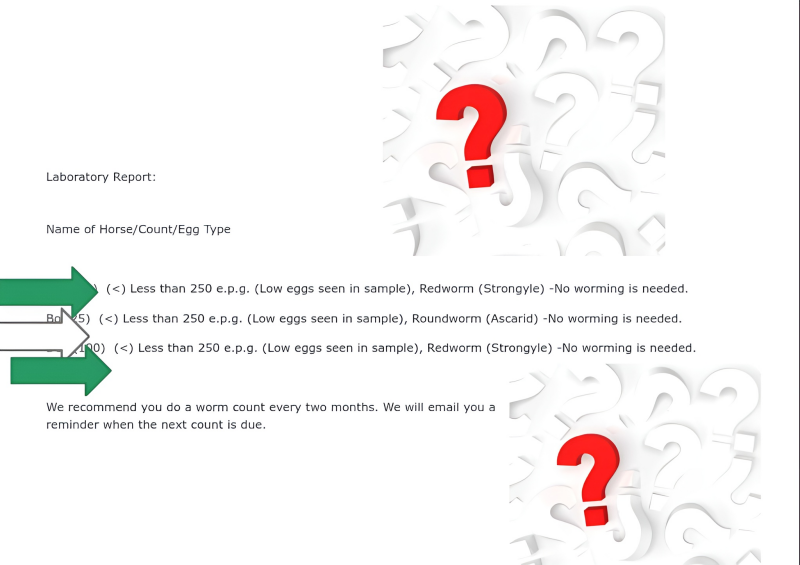
STANDARD WORM COUNT TEST RESULTS
What do the results of my horse’s fecal egg count indicate, and what does a worm count test assess?
Each horse listed on the results sheet will have a number that reflects the quantity of worm eggs detected.
Which types of worms are identified through a fecal egg count test? Typically, your results will indicate STRONGYLE EGGS (Redworm).
This term encompasses both small and large redworms, which are the most prevalent parasites affecting horses.
Fecal egg counts reveal all stages of redworms except for the encysted forms, as these are not mature enough to produce eggs that can be detected in the fecal sample.
It is crucial to treat test for encysted stages with a blood test (Alisa) from your vet. If you have a positive result, you can use an effective product during the winter months (December to February), after which you can depend on worm counts for the rest of the year.
Worm egg counts are not a conclusive test for TAPEWORM EGGS, as these may not always be present in the count.
Your horse may still have tapeworms even if no eggs are detected. For a reliable method to monitor tapeworm infections, consider using the Equisal saliva test twice a year.
We may also identify ASCARIDS, which are roundworms that typically pose a risk to foals and previously neglected horses.
Any indication of these worms generally necessitates treatment. Traditional medications like Pyrantel and Fenbendazole show the least resistance for treating ascarids.
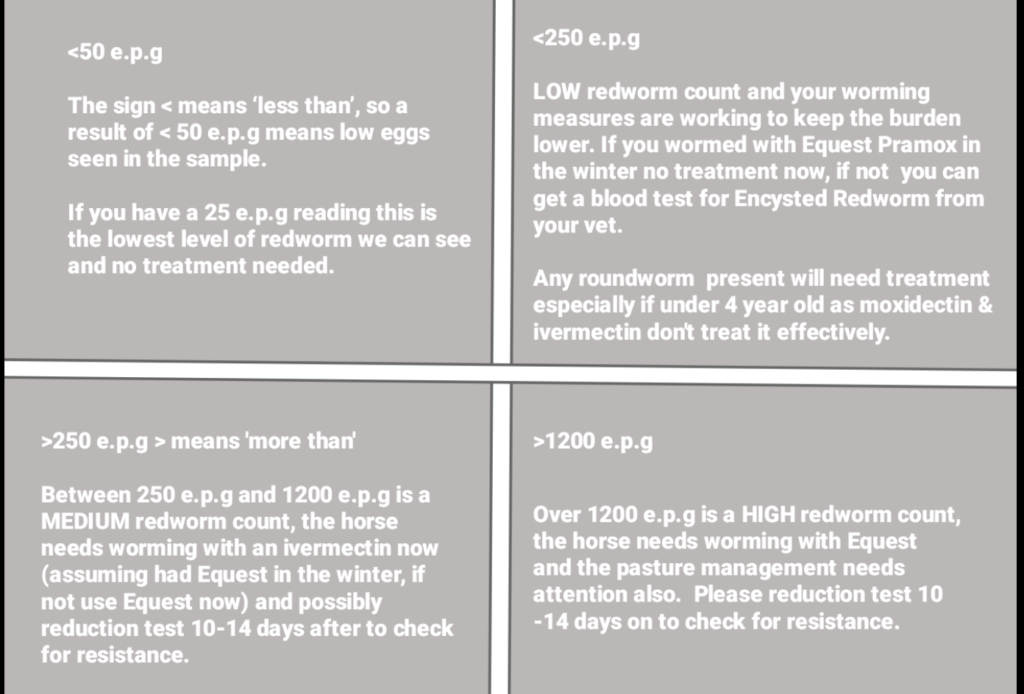
UNDERSTANDING FEC RESULTS
Understanding Equine Worm Egg Count Results Worm egg count results are reported in eggs per gram, rounded to the nearest 25 (e.p.g).
Have you thought about testing for tapeworm in the past six months? If not, we recommend considering EquiSal testing at this time. If you have already tested for tapeworm, please wait for those results before administering any treatment, as you may require a combination wormer.
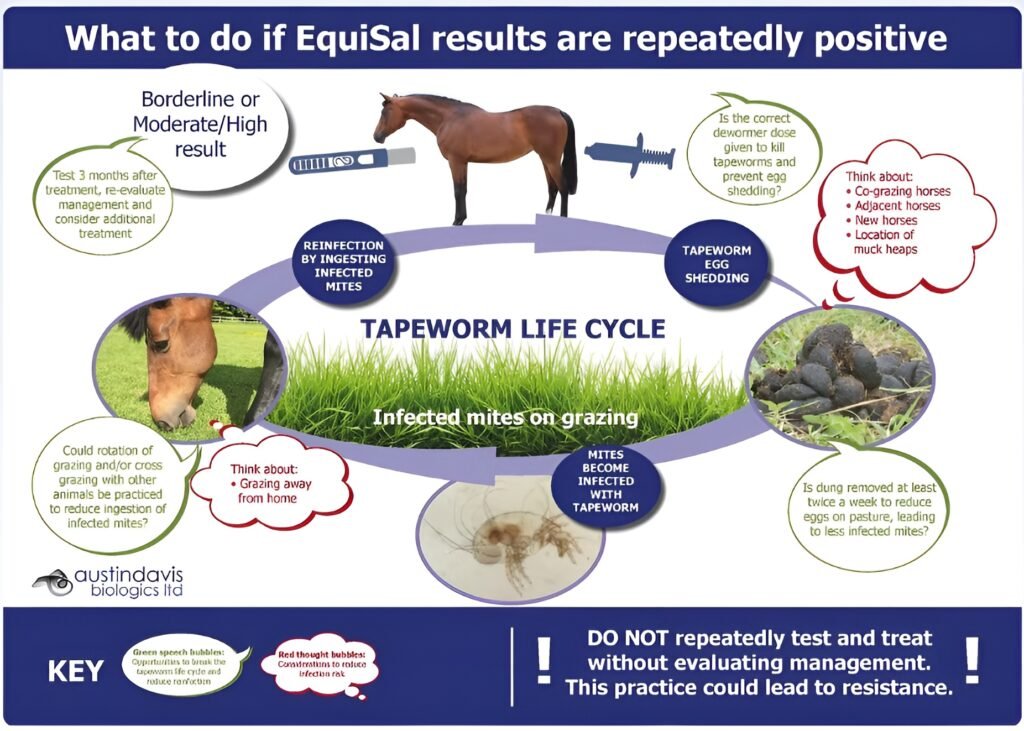
TAPEWORM SALIVA RESULTS
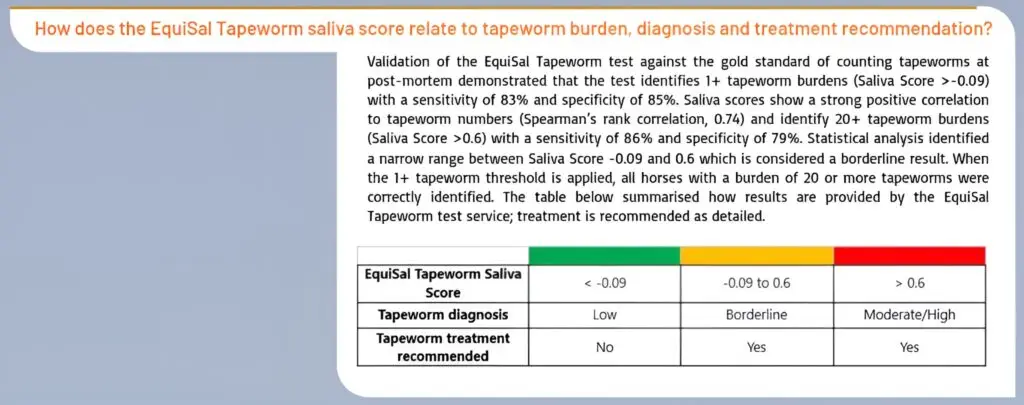
The results will indicate horses with a low parasite load, those with a borderline result (1 adult tapeworm), or those with a moderate to high burden (9 or more adult tapeworms).
Treatment recommendations will be provided by Austin Davis Biologics, the laboratory that created the test, as outlined in the table above.
The saliva score results range from negative to positive numbers, which can occasionally be perplexing.
If you find this unclear, we have created the following infographic to clarify how it operates:
The most important part of the result to focus on is the accompanying advice about whether worming is required.
Any score of -0.09 or higher needs treatment.
TAPEWORM TREATMENT
The most effective tapeworm treatments target adult worms rather than larvae, which means that horses may require multiple testing and treatment cycles to effectively manage an infestation.
There are two primary chemicals used to treat tapeworm infections in horses: praziquantel and pyrantel, the latter administered at a double dose.
If the focus is solely on tapeworms, a praziquantel-only dewormer is the preferred option, as it does not affect other equine parasites.
However, since the withdrawal of Equitape from the market in 2018, obtaining praziquantel has become more challenging.
It can still be accessed through a veterinarian as a special order and is highly recommended if available. As an alternative, a double dose of pyrantel is the second option. This treatment is also advisable if ascarids are present, which is more common in foals or yearlings, or if the redworm population is known to be susceptible to pyrantel.
Praziquantel remains available over the counter in combination with ivermectin and moxidectin for cases requiring treatment of redworm or encysted redworm simultaneously.
It is essential to minimise the exposure of worms to chemicals unless testing indicates that treatment is necessary.
Tapeworm testing following a borderline or moderate/high result: evidence-based guidance
Recent reports have indicated a decline in the efficacy of both praziquantel and pyrantel against equine tapeworms (Nielsen 2023).
Consequently, we are providing updated guidance on utilising EquiSal saliva testing to enhance tapeworm management.
For horses that present with a borderline or moderate/high saliva score, a retest can be conducted 12 weeks post-treatment.
This timeframe is based on the observation that tapeworm-specific IgG(T) antibodies decrease more quickly in saliva than in serum.
A study has shown that in over 70% of horses treated with praziquantel, the antigen-specific saliva IgG(T) levels drop below the treatment threshold within five weeks (Lightbody et al. 2016).
Subsequent research has indicated that horses grazing in fields where manure is regularly removed or those kept in stables tend to show reduced saliva scores.

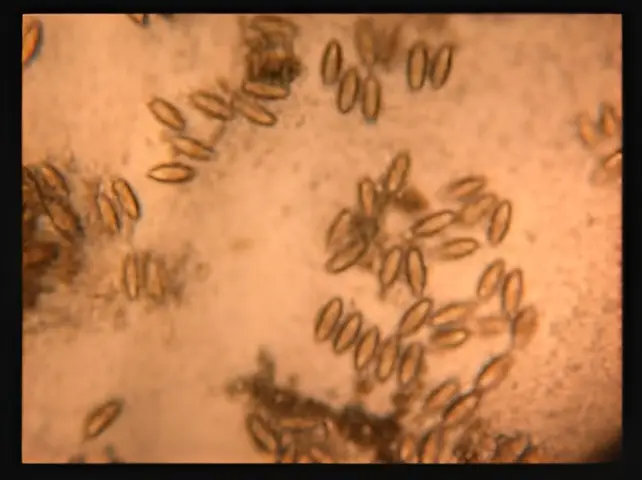
PIN WORM RESULTS
Regarding pinworm test results, a negative outcome indicates that no eggs were found at the time of testing, but it does not confirm the absence of pinworms in your horse. If you continue to have concerns, consider retesting while monitoring for additional symptoms, such as tail rubbing, the presence of small worms resembling beansprouts in droppings, or signs of the sticky substance in which the eggs are deposited around the anus, which may appear yellow or orange.
If pinworm is diagnosed, either through a sellotape test or by observing them in the horse’s faeces, treatment should involve traditional dewormers such as pyrantel (Strongid P) or fenbendazole (Panacur 5 day guard).
These options are generally more effective against pinworm than ivermectin or moxidectin due to their metabolic processes in the horse’s digestive system.
Additionally, applying neem oil to the horse’s skin can be helpful in preventing the eggs from adhering after they are laid. This should be combined with proper stable hygiene, including disinfecting areas where the horse may rub its tail, to reduce the risk of reinfection.
While it is uncommon to find pinworm eggs in worm egg count samples, it can happen since the eggs are typically deposited outside the horse, near the anal region.
If present in the sample, they will be noted in your results, and the aforementioned treatment recommendations should be followed.
You may conduct another pinworm test two weeks after administering the dewormer to assess its effectiveness.
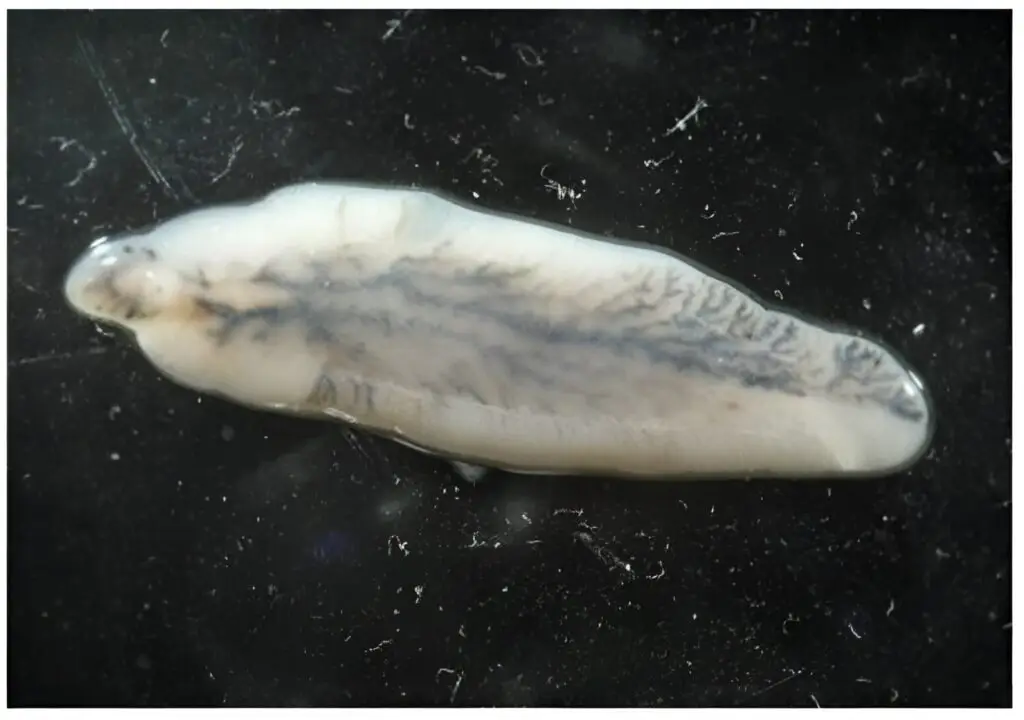
Liver Fluke (Fasciola hepatica)
is a flat, leaf-shaped parasite that primarily inhabits the livers of grazing animals, particularly sheep and cattle, but it can also affect horses.
The populations of liver flukes are significantly influenced by temperature and moisture conditions from the current and previous years, with animals in wetter and warmer environments being at greater risk.
The liver fluke egg count test resembles a standard worm count; however, due to the challenges associated with liver fluke reproduction in horses, three samples are collected over three consecutive days to enhance the likelihood of identifying the parasite.
A POSITIVE TEST RESULT
If a positive liver fluke count is found in a horse or in any grazing animals nearby, such as sheep or cows, it is essential to seek veterinary advice for appropriate treatment.
Currently, there are no approved medications for liver fluke in horses. The only treatment option involves a flukicide that must be prescribed off-label by a veterinarian.
A faecal worm count is one of the most prevalent methods for detecting liver fluke. Given the parasite’s complex life cycle, testing is most effective between February and May, as this period allows for the identification of adult, egg-laying stages.
While a worm egg count is not a conclusive test for liver fluke, it remains a valuable diagnostic tool.
Alternatively, an ELISA blood test, available through your veterinarian, can identify both immature and adult, egg-laying stages of the parasite.
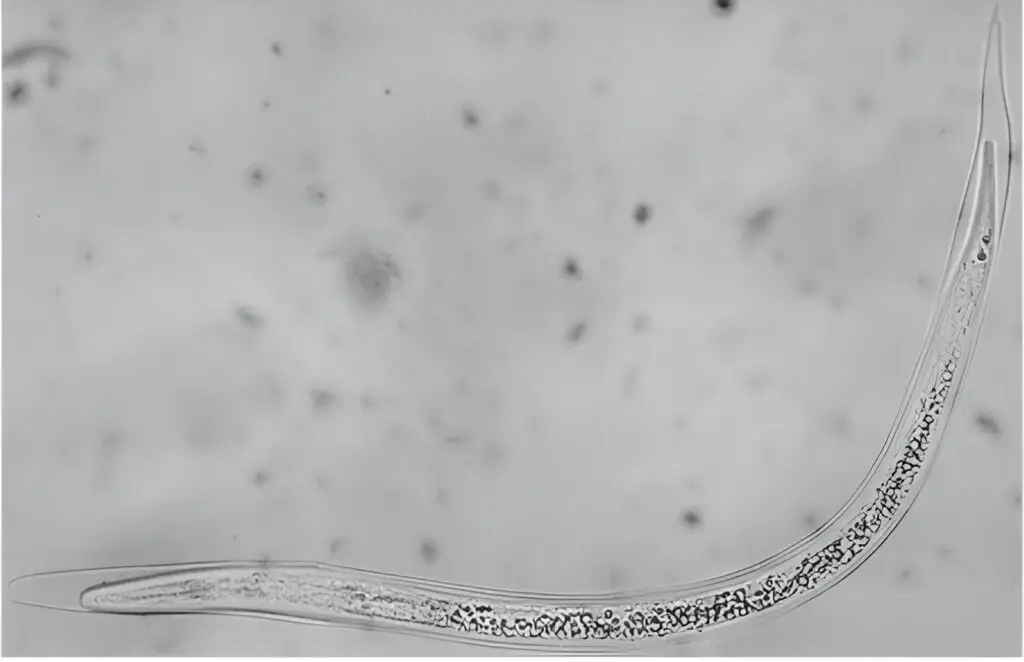
LUNGWORM RESULTS
If a lungworm infection is suspected, a faecal sedimentation test is performed in the laboratory to confirm the diagnosis.
This test effectively isolates the heavier lungworm eggs from the faecal material, allowing for microscopic identification.
Since the parasite seldom reaches the egg-laying stage in horses, it is often more effective to test donkeys or mules, which are believed to be the primary hosts of the infection, rather than the symptomatic horse.
Testing is conducted throughout the year, and treatment is advised if any signs of lungworm infection are detected in the sample.
The sedimentation test requires 2-3 times more faecal material than a standard worm egg count and takes several days to complete.
TREATMENT FOR LUNGWORM
Ivermectin and moxidectin are the most effective treatments for lungworm.
Both medications can be administered to horses, but not all ivermectin-based dewormers or moxidectin are approved for use in donkeys.
If there is any uncertainty, it is advisable to consult with your veterinarian. The Donkey Sanctuary recommends the Eqvalan brand over generic ivermectin dewormers due to the positive treatment outcomes observed in their animals.
GENERAL GUIDANCE ON WORMING DONKEYS The British Equine Veterinary Association supports a targeted worm control strategy for donkeys, which is based on worm counts and testing.
Treatment should only be administered if tests indicate a need, particularly for specific seasonal issues such as encysted redworm, lungworm, bots, and pinworm.
This approach helps mitigate the development of drug resistance and is more beneficial for both the donkey and the environment.
Worm counts should be conducted every three months to monitor for redworm and roundworm, while an EquiSal saliva test should be performed every six months to check for tapeworm.
Although the EquiSal test has not been scientifically validated for donkeys at the post-mortem level, many donkeys have been tested with positive results. Foals, young animals, and those with a poor start will require closer monitoring.
A winter treatment for potential encysted redworm should be administered between December and February, consisting of a five-day course.
